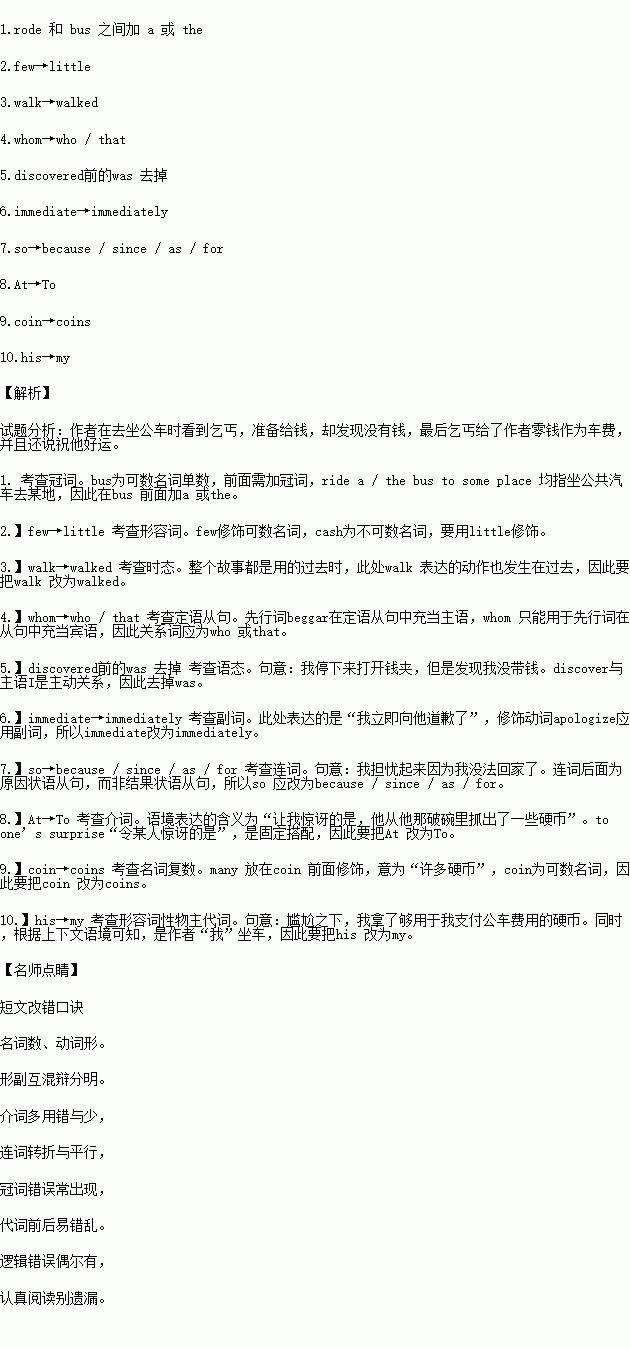��Ŀ����
�ٶ�Ӣ�������ʦҪ��ͬ��֮�佻�������ģ���������ͬ��д���������ġ������й��� 10 �����Դ���ÿ���������������ÿ��������漰һ�����ʵ����ӡ�ɾ�����ġ�
���ӣ���ȱ�ʴ���һ��©�ַ��ţ��ģ�����������д���üӵĴʡ�
ɾ�����Ѷ���Ĵ���б�ߣ�\��������
�ģ��ڴ��Ĵ��»�һ���ߣ����ڸô�����д���ĺ�Ĵʡ�
ע�⣺1.ÿ���������ľ�����һ�ʣ�
2.ֻ������ 10 �������ߣ��ӵ� 11 ���𣩲��Ʒ֡�
Last month, I rode bus to my office ten miles away. I carried only a few cash to last each week. One night, as I walk to the usual bus stop, I met a beggar whom had no legs. I stopped and opened my wallet, but I was discovered that I had no money at all. I apologized to him immediate. I became worried so I had no way to get home. At my surprise, the beggar pulled out many coin from his broken bowl. Embarrassed, I took enough for his bus fare, and he said, ��Good luck!��

